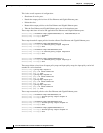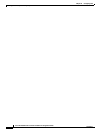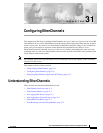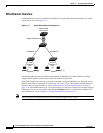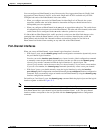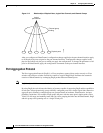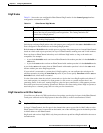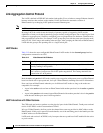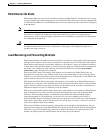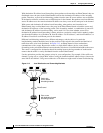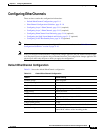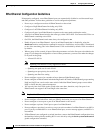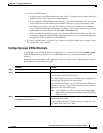
31-6
Cisco ME 3400 Ethernet Access Switch Software Configuration Guide
78-17058-01
Chapter 31 Configuring EtherChannels
Understanding EtherChannels
Link Aggregation Control Protocol
The LACP is defined in IEEE 802.3ad standard and enables Cisco switches to manage Ethernet channels
between switches that conform to the standard. LACP facilitates the automatic creation of
EtherChannels by exchanging LACP packets between Ethernet ports.
Note LACP is available only on NNIs.
By using LACP, the switch learns the identity of partners capable of supporting LACP and the
capabilities of each port. It then dynamically groups similarly configured ports into a single logical link
(channel or aggregate port). Similarly configured ports are grouped based on hardware, administrative,
and port parameter constraints. For example, LACP groups the ports with the same speed, duplex mode,
native VLAN, VLAN range, and trunking status and type. After grouping the links into an EtherChannel,
LACP adds the group to the spanning tree as a single switch port.
LACP Modes
Table 31-2 shows the user-configurable EtherChannel LACP modes for the channel-group interface
configuration command on an NNI.
Both the active and passive LACP modes enable ports to negotiate with partner ports to an EtherChannel
based on criteria such as port speed and, for Layer 2 EtherChannels, trunking state and VLAN numbers.
Ports can form an EtherChannel when they are in different LACP modes as long as the modes are
compatible. For example:
• A port in the active mode can form an EtherChannel with another port that is in the active or passive
mode.
• A port in the passive mode cannot form an EtherChannel with another port that is also in the passive
mode because neither port starts LACP negotiation.
LACP Interaction with Other Features
The CDP sends and receives packets over the physical ports in the EtherChannel. Trunk ports send and
receive LACP PDUs on the lowest numbered VLAN.
In Layer 2 EtherChannels, the first port in the channel that comes up provides its MAC address to the
EtherChannel. If this port is removed from the bundle, one of the remaining ports in the bundle provides
its MAC address to the EtherChannel.
LACP sends and receives LACP PDUs only from ports that are up and have LACP enabled for the active
or passive mode.
Table 31-2 EtherChannel LACP Modes
Mode Description
active Places a port into an active negotiating state in which the port starts negotiations with other
ports by sending LACP packets.
passive Places a port into a passive negotiating state in which the port responds to LACP packets
that it receives, but does not start LACP packet negotiation. This setting minimizes the
transmission of LACP packets.



